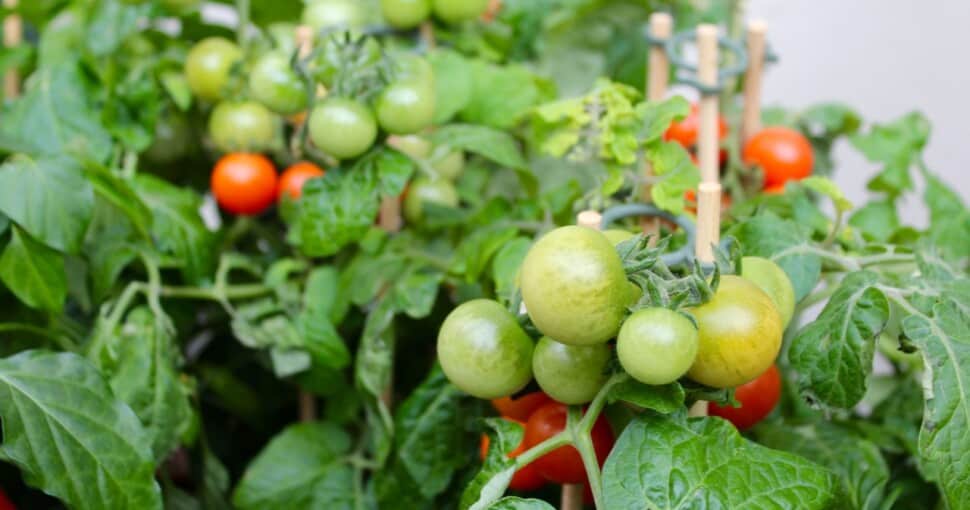Tomato plants are a staple in home vegetable gardens With their distinctive leaves, stems, flowers and of course, bright red fruits, tomato plants are easy to identify. Or are they? There are actually several other plants that can be mistaken for tomato plants, some of which are toxic As a gardener, it’s important to properly identify plants before ingesting them or allowing others to do so.
Here are 6 plants that often get confused with tomato plants
1. Horse Nettle
The horse nettle (Solanum carolinense) looks almost identical to a tomato plant. It has prickly stems and leaves, and produces small yellow fruits that resemble cherry tomatoes. However, all parts of the horse nettle plant are poisonous. Consuming any part can cause symptoms like nausea, abdominal pain, and neurological issues. Horse nettle is considered an invasive weed in many areas. If found, it should be removed and disposed of properly.
2. Litchi Tomato
At first glance, litchi tomato plants (Solanum sisymbriifolium) look just like regular tomato plants. They have similarly shaped leaves, stems, flowers and fruits. However, litchi tomatoes can be identified by the small thorns on the stems and undersides of leaves. The fruits are red and cherry tomato-sized, but safe to eat when completely ripe. Litchi tomato is not toxic like horse nettle, so no need to remove it from your garden!
3. Garden Huckleberry
Garden huckleberry (Solanum scabrum) is a nightshade that resembles tomato plants, with slightly straighter leaves and brighter stems/leaves. The green berry-like fruits could be mistaken for unripe cherry tomatoes. However, garden huckleberry fruits are poisonous, as are other parts of the plant. It’s best not to have this in your edible garden.
4. Black Nightshade
Black nightshade (Solanum nigrum) is another lookalike. When immature, the green cherry-tomato-like fruits of black nightshade can be confused with unripe tomatoes. But when ripe, they turn a dark purple. The leaves are also straighter than tomato plant leaves. As with other nightshades, black nightshade is toxic and should not be ingested.
5. Red Soda Apple
Red soda apple (Solanum capsicoides) is a prickly perennial plant that resembles tomato plants in form and fruit shape/color. They produce small red spherical fruits that could be mistaken for cherry tomatoes based on appearance. However, red soda apple is a nightshade containing solanine and other toxic alkaloids. Stems are one way to distinguish them, as they contain sharp spikes.
6. Potato
While not a lookalike in the traditional sense, potato plants bear a strong resemblance to tomato plants above ground. Leaves, stems and flowers appear very similar. Of course, potatoes produce tuberous roots rather than fruits. But an inexperienced gardener could see potato flowers and assume the plant is a tomato. Simply digging around the base is an easy way to identify potatoes versus tomato plants.
Proper plant identification is important for any gardener. Many toxic lookalikes can easily be mistaken for edible plants like tomatoes. Take time to carefully examine unknown plants, especially their fruits, flowers, stems and leaves. If unsure, don’t ingest any part until positive identification can be made. With a little knowledge, tomato plants can be positively differentiated from common lookalike species.
Never plant tomatoes without this. For large fruits and more tomatoes, follow this
FAQ
What plant looks like a tomato plant?
Are there poisonous plants that look like tomatoes?
What is the nightshade that looks like a tomato plant?
What are the little green tomato looking plants?
- A Complete Guide to Caring for Yuki Cherry Blossom Shrub - January 23, 2025
- Identifying Red Hot Poker Seeds: What to Look For When Harvesting Torch Lily Pods - January 23, 2025
- A Complete Guide to Harvesting Evening Primrose Seeds - January 23, 2025

